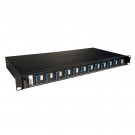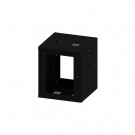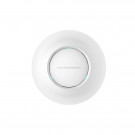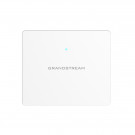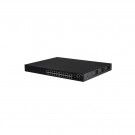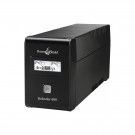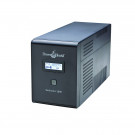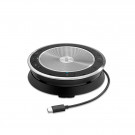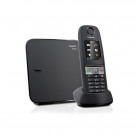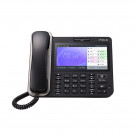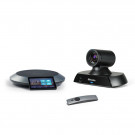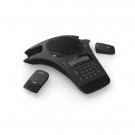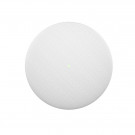Hikvision Visiting the World's Largest Surveillance Manufacturer
Originally published by John Adams of Security Electronics & Networks
Submitted on Mon, 10/20/2014 - 10:13

Hikvision is the world’s largest video surveillance and electronic security manufacturer. It’s a towering achievement considering Hikvision didn’t make its first DVR until 2004. But what’s behind the company’s phenomenal success?
ARRIVING in China after a long flight, I spend a Sunday mooching around Hangzhou with Hikvision’s Daniel Huang and Michael Bates. The idea is to get a sense of the city and of Chinese culture before visiting Hikvision’s head office and factory - to get a feel for what lies behind the Hikvision story.
Through the windscreen of the car as we drive I see deep layers of modern industrial and commercial development but there’s much more going on here. Hangzhou is connected to green space, pegged by river crossings, in love with the mythology of its verdurous earth. It’s at once in touch with a deep history stretching back before the Roman conquest of Britain in 43CE and a more recent history of wood-fired stoves and bicycle transport at the beginning of the 20th century.
It’s against the contrast of a vast and complex historical and cultural backdrop you need to see this country’s awe-inspiring 21st-Century technological evolution. Reading stories of sterile pop-up cities gives a false impression of China’s profound identity. Hangzhou is a revelation.
We visit the Pagoda of 6 Harmonies built around 500BCE as a tide brake on the Qiantang River and lunch in a delightful, hidden nook amid the bustle of the old city. In the afternoon we go down to the West Lake where hundreds of thousands of locals promenade along tree-lined paths, crossing water-mirrored bridges. Over the lake is a rim of low, green hills. It’s a thrilling scene.
In the evening, we return to the West Lake and in an audience of thousands, watch a live show that conspires to enlist the surface of the lake, its circling trees and a cast of hundreds of players in a piece of metaphysical theatre at once poignant and mysterious to a Western mind tuned to bare boards and a spiky script. As the show ends, the steel frame of a vast stage, hitherto hidden under 2 inches of water, tilts slowly skywards, streaming runnels of light, blurring the line between heaven and earth, as the tormented lovers search for each other in different dimensions.
Next morning as we drive to the new head office, Hikvision Australia’s Michael Bates talks me through the company but this proves insufficient to prepare me for the scale of the thing. When we arrive it seems quite natural to pull up and get out of the car, staring up at Hikvision’s HQ as if it’s some kind of natural wonder. The company’s 100,000 square metre HQ is a pair of 22-story towers linked by a 4-storey ‘bridge’ comprising demo rooms, canteens and meeting rooms.
With a projected 2017 turnover of $US7 billion, Hikvision is the world’s largest manufacturer of video surveillance solutions by a considerable margin, despite its relative youth. That enormous turnover also makes the company the largest manufacturer of electronic security products by a factor of around 2. Hikvision isn’t finished with growth, either. Its slice of the domestic market in China is only 28 per cent and the company commands a much smaller percentage of the international market.

Hikvision's Daniel Huang and Michael Bates at the new head office
The company’s product range covers all possible camera types across multiple ranges, as well as DVRs and video management systems to support networked solutions. Set against its huge range is the juxtaposition that Hikvision didn’t build its first DVR until 2004. For a company to grow from virtually nothing to the world’s largest CCTV manufacturer in 10 years requires something more than me-too technology and a doctrine of price war. But what could it be?
The birthplace of Hikvision was within a research body that primarily developed video surveillance product for 52 Chinese institutes. But in 2001, Hu Yangzhong and a colleague separated from that organisation and formed Hikvision with a team of 28 staff. The team was already familiar with the CCTV industry from its research work and the first products it brought to market were compression cards.
Because they were developing solutions right at the edge of the transition from analogue to digital surveillance, the Hikvision team saw a golden opportunity to develop IP surveillance products which they quickly seized. That the original team spun out of a research group is highly instructive and it explains why Hikvision has R&D encoded into its DNA.
A large part of Hikvision’s success comes down to its commitment to R&D, which spooled up just as the GFC was taking the wind out of the rest of the world’s developmental sails. While other companies cut corners on R&D and stretched product development gaps, Hikvision went all out. It’s at this point we come to the numbers and they’re staggering.
Hikvision has 11,000 staff and of these 3700 are engineers. That’s around one third of the team devoted to product development. It’s an amazing balance and when you consider the competitive nature of the market, it’s how things need to be. A company can no longer succeed on the basis of one clever idea. It takes a river of ideas to dominate today’s technological landscape over the long term.
The official word is that Hikvision reinvests 7 per cent of revenue into R&D but that doesn’t really give a sense of the company’s commitment to new technology and innovation. You need to actually see Hikvision’s commitment to understand it – row after row of workstations, floor upon floor of building space dedicated to thousands upon thousands of engineers working in a welter of camera bodies, control boards, lenses, housings, cabling and componentry.

Hikvision's motto on a wall at the factory has a small business simplicity
But making my comprehension challenging is the company’s wild growth rate. Hikvision is not a fixed point. It has median growth rate of more than 50 per cent year-on-year, with international sales growing at more than 100 per cent in the last financial year. At this point Daniel Huang points airily over the fence at the 150,000-square-metre vacant lot behind us.
Once that site is developed, the engineering team will move over there, he tells me, with a mischievous grin. All 3700 of them? I ask. Oh, no, Huang says. In 3 years we’ll have 6000 engineers and we’ll need that space to fit them all in.

The undeveloped site across the road from the new head office - it'll house 6000 engineers...
If this is not brain-frying enough, we passed the manufacturing facility on our drive to head office. Manufacturing currently occupies the 3 buildings that housed the entire company before this new HO was completed. But growth is so great that the original site is too small so manufacturing is moving to a new site around one square kilometre in size that’s about 50km out of town.
What a headspin, I say to myself. It’s a sense I get a lot throughout this tour. Hikvision operates on an epic scale. Many times my consciousness stream is completely lost for words.
“A year ago the numbers were mind-boggling for me, too,” Bates consoles me. “But working with Hikvision for a year it’s become real and I can see how that scale gives us enormous power. A strength of Hikvision is the ability to bring new product from the embryonic stage to market at great speed.
“The company is so strong on customisation of products and develops new technology so quickly that when people ask if we have a solution I’ve not heard of, I’ll check with HO just to make sure we’ve not developed it without me hearing about it.”
As we make our way through the foyer and the downstairs areas of head office, Huang points out little details, including access-controlled courier boxes, allowing automated delivery and receipt of packages. It’s an example of the scale of the site, there are more than 5000 staff at Hikvision’s HQ and you need automation to manage their needs.

Next, we go into the demo rooms. This space has a temporal nature and as we head for the main demo area we move through a curved hall displaying the company’s key products over time, including analogue and early IP cameras and DVRs. From there we move into the demonstration area itself and again it’s simply massive – entirely in keeping with the rest of the Hikvision operation. The design uses a lot of white and there are plenty of points of light and a highly polished tiled floor – a tough challenge for IP cameras, I think to myself, as we walk in.
The space is large enough to have multiple wings, with application rooms breaking off it to show the nature of particular solutions – industrial, transport, prisons, educational, domestic. But while these things are neat, what really gets me going is what’s bolted to the hanging ceilings. Before I came away I took the time to read up on Hikvision’s products to get a sense of where the company’s technology was at. I thought I had it broadly covered until the demo room proved me wrong.
Later it occurs to me that when you have 3700 engineers on your team there’s a vast creative energy that leads to things just…happening. In the case of Hikvision, those things include interesting new camera types and solutions that feel like unique conceptions designed by the engineering team to meet the specific requirements of specific end users.

Hikvision’s 6-Line Smart IP camera range starts to make more sense in the demo room. Rather than being based on the same chipset specification and housing options in the way the 2-Line and 4-Line families are, the 6-Line is completely off the hook. Here’s a 1080p camera that can see in the dark – what series is this? 6-line. A 6MP hemispheric with 15m IR coverage. Ummm, 6-Line. A 36x PTZ with 500m laser light? 6-Line again.
It stands to reason that when you are walking through the world’s biggest demo room the conversation is going to go sideways. As we move through the space staring alternately at the ceiling and the adjacent monitors showing local image streams, the questions start flying in all directions. I get the distinct impression that there are products here the Hikvision sales people have never seen before. The atmosphere is exhilarating and the detail is exquisite.
We view the Darkfighter – an excellent low light camera – looking directly into the headlights of a car and clearly seeing number plates. We see Hikvision’s integrated IVA – in this case face detection – which fires up the camera and grabs snap shots of us as we walk through. It works very well, displaying everyone in a group virtually instantly on a monitor. We see 2MP HD-SDI – and it’s very good. There’s a thermal camera with a pronounced heat sink.
What is that, I ask, pointing to a big PTZ. One side is a 36x optical zoom camera – the other is a laser with 500m range, says Daniel. A laser PTZ. OK, then. A laser. Then there’s a camera and software designed to recognise the faces of trucks. Every vehicle has a distinctive signature appearance, which includes windscreen tags, cigarette packets on the dash, stickers, bullbars, spotlights, aerofoils and all the rest. This system allows a vehicle to be recognised even if the plates have been switched and to alert an operator.
There’s a new 4-Line IK10 Bullet with a 150m IR range. It’s compact, considering its power and shows Hikvision’s capability and MO. Rather than being based on a fixed set of specifications, the 4-Line Smart IP range is fluid and the company will continue to expand it and enhance it. All Hikvision’s lenses are built by a subsidiary company specifically for an applicable sensor, someone tells me.
It takes a long time to work our way through the demo room – this is just amazing, I say to Bates. All the lateral applications are filled and the thing that gets me is that this is just the beginning for Hikvision – the company has established itself, gained market leadership and is now looking to make its mark.
We see a 1080p HD 20x video streaming PTZ for internet-based educational applications – the idea is the camera allows remote students to follow a course remotely. It’s a tidy unit – a different and very composite look – it’s a tracking camera so it automatically follows the teacher. We see a criminal interview system, a powerful explosion-proof stainless dome. I didn’t know we had an EX-rated camera, says Bates, not for the first time.
Something that nicely illustrates the company’s capabilities is the video management system Hikvision supplies with all its DVRs and NVRs. Hikvision did not make a VMS until 2010 but it’s now the third largest manufacturer of VMS in the world. This success is driven by the fundamental that Hikvision is the largest DVR and NVR manufacturer in the world but it’s a mistake not to realise the ramifications.
The company’s current VMS offering is the 4200 Series but software engineers are currently working on the 5200, which has a planned release date around April 2015. It’s the intensity of the effort going into this release that’s noteworthy.
“Hikvision is in the process of sending people all around the world to get input from clients on what sorts of features and capabilities they require in a VMS and there are hundreds and hundreds of engineers working full-time on it,” Bates tells me.
“This means our VMS is developing rapidly and its functionality is closely mirroring user requirements. The team is discovering what features users think are essential, what they think would be nice. This process is being undertaken step-by-step, market-by-market. It’s indicative of the nature of the company, the seriousness with which it takes product development.”
We take a look at the meeting and training rooms on the top floor of the bridge. Again it’s all on a grand scale. There are small rooms for meetings of 10 and huge meeting rooms that would fit 300. It’s impossible not to be impressed with all this. Finally, we go out onto the top of the bridge between the 2 towers. It’s not complete yet but there will be a roof garden up here linking the 2 buildings.
Moving through the enormous building is instructive in itself. It’s corporate but not corporate for its own sake. There’s a sense of manufacturing that permeates every corner that doesn’t seem to be my imagination. Perhaps it’s the thousands of eager, young engineers – men and women – hustling about talking product.
I meet the international sales team, the marketing team – all are young, earnest and committed. As we walk through one of many R&D Departments, Bates points out fold-up cots next to the desks so workers can sleep if they are working late. There’s a lot of this intense commitment visible at Hikvision.
It’s after midday now and Huang takes us through one of the Hikvision canteens. The place is just heaving. Given there are 5000 staff at Hikvision’s HO the canteens are vast, stretching off into the far distance. It seems to me there must well over 1000 people in the canteen – it’s more like the food court of a busy airport than a corporate diner.

And there are 2 of these canteens. Huang takes us down a floor and through the other one. These are some of the engineers, says Huang, motioning towards the throng. This is the first of their 2 lunch shifts. My response is a wry chuckle. Once again I notice that everyone here is very young. Huang points out that buying from the canteen is handled by smart card, which makes the huge process of feeding everyone more efficient.
We jump in the car and head for Hikvision’s manufacturing facility. One of the funny things, I tell Bates as we drive, is that usually it’s easy to conceptualise the entirety of a business and get a feel for the whole of it. But I’ve not been able to do that with Hikvision. You’ve not seen manufacturing yet, Bates laughs.
“The thing to take away is the sheer scale and you can’t get it until you see it. And it’s actually a statement of intent,” he says, with a more serious note in his voice.
“What really astounds me is that although there are 3700 engineers, there is still a queue when you want something done. Those engineers are busy working on current projects right now – they’re not waiting around for the business to expand.”
The Manufacturing Facility
We reach the manufacturing facility and meet our guide, Olivia. This facility is the company’s old HO and it has a huge demo room of its own, which we take a look at on our way in. Then we put on our coats and anti-static overshoes and start walking. Even though this facility is built in an older style, everything is still on a huge scale.
Passing through access controlled doors we enter one of the manufacturing floors. There’s a low thrum and I breathe in the warm, electrical smell of solder paste. In this space there are 8 SMT production lines running in 2 shifts, one day and one night, with an output of 5.1 million boards per month. According to Olivia, if things get busy shifts can be extended to 10 hours.

Looking around I can see these are fairly typical Siemens production lines, with part pickers, mounting machines, overflow ovens, optical testing machines, X-ray testing machines and wave soldering machines. Each line is dedicated to a single product for a set period of time until an order is completed, then it tools up for the next run.
Interspersed throughout the production lines are stations for manual checking of components picked out for observation by the line’s automated optical tester. A management system pulls boards off the line and displays an image showing where there may be a problem. The line we follow is working on a digital recorder. The boards progress along the line, are tested, wave soldered, X-ray tested and then there’s a function test behind the production line to ensure circuit values are consistent with specifications.
There are hundreds and hundreds of staff bent to their tasks – their uniform colours denoting them as worker, line leader, or one of the in-process quality controllers dedicated to each production line. There are interesting little personal touches here, too. An attendance board showing all the workers on the floor allows workers to nominate their mood – most have smiley faces denoting happiness. But a small number have a sad face. The idea is that line leaders will not put workers in key locations on days they are not feeling at their best.
We go to another enormous manufacturing floor – this one is dedicated to IP cameras. There are 21 product lines in here and it’s really buzzing. I’ve seen camera manufacturing lines before but nothing remotely like this. Standing there, drinking the scene in, it occurs to me that this room is the vibrant, clattering heart of Hikvision’s titanic accomplishment.
This area is running a single 8-10 hour shift and has a daily capacity of 18,000 IP cameras. The lines are building fixed domes, box cameras, transport cameras, bullet cameras and more. There’s a lot of assembly work with cameras – the lenses, housings, dome bubbles, terminations and all the rest have to be hand-built.
Olivia tells me that the tests include not only camera performance but the performance of the tools used to assemble the cameras, right down to the torque potential of electric screwdrivers. After completion, cameras are tested manually and by automatic analytic software developed by Hikvision. Once the cameras have been built and packaged, a further 7 per cent are unpacked and tested again.
Next, we look through a window into the dust-free clean room where lenses are being assembled. Hikvision didn’t used to manufacture lenses but found it needed to be in control of quality and development, so the company bought a lens manufacturer, Huang tells me. This allows the company to ensure its lenses and sensors are perfectly matched.
There are a few tell-tales in the bustle of the manufacturing facility that point to the company’s high internal standards. In one area I see quality failures from a production line printed in colour and pasted on a huge board dedicated to the purpose of highlighting mistakes.
Alongside, successes are publically documented, too. Statistics show the dollar value of clever ideas of workers and how much they save the company. The idea is to encourage input from staff, allowing inefficiencies to be weeded out through the accumulation of group experience. Watching the teams work it seems there’s a definite esprit de corps at Hikvision.
Something else that’s interesting is that every few hours there’s an official rest break and music is piped throughout the facility while everyone has to stop work and put their feet up. This happens while we’re there and everyone drops what they are doing. Some workers head for the exits to chill out away from the production lines, while others rest at their stations, chatting quietly to neighbours.
We do a lot of walking in the manufacturing facility’s 3 huge buildings, passing stores of packaging material, multiple manufacturing lines dedicated to specific clients. The scale is enormous. Groups of workers of all types hurry about their business, the manufacturing lines go on and on.
When our tour ends I’m chatting with Bates about the company and its goals. It’s been a long day but neither of us can quite disconnect ourselves from the scale and the intensity of Hikvision and its declared mission.
“The investment in R&D and the quality of the Hikvision product is such that if we get the product in front of end users and integrators they will buy it,” Bates tells me, leaning forward in his chair.
“The only thing that stops us getting the product in front of them is they don’t know who we are. We are not a me-too trading company but a technology leader. We are quite different to what perceptions might be.”
Thinking about this later, it’s obvious Bates is right. This company is different. In a very real way, Hikvision combines a small business commitment to please its customers with a powerful drive to prove itself the world’s CCTV technology leader. And it expresses these imperatives in terms of irresistible economies of scale thanks to a vast domestic market and a comparatively affordable work force, all this supported by relentless re-investment in the business.
The idea of visiting the Hikvision factory was to understand the company, to fathom the cultural soil that enriches it, to be able to write the company down in words. But ultimately a complete comprehension is impossible and the observer becomes lost in a forest of poor analogies.
Seen objectively, Hikvision is a child of East and West. A business built on Western principles of quality and brand value and Chinese principles of intense customer service and long term strategy. But there’s something else underpinning Hikvision, something that is pure China. It’s pride. An unwavering belief that Hikvision should not simply be the largest CCTV manufacturer in the world but that it should build the best CCTV technology in the world.
From an outsider’s perspective, this might seem strange coming from a Chinese manufacturer. In the West we’re accustomed to thinking of China not as the living being she is, but as an object, a massive production line for someone else. But moving through this landscape, its foundations buried deep in the creative efforts of a 2000-year-old culture, you suddenly realise the thing you thought was missing has been there all along.








